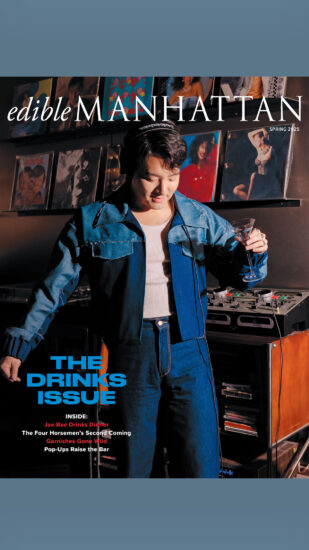Sliced white bread has transitioned through myriad different roles in the American psyche. Popularized as a response to perceived food safety concerns in locally produced baked bread (check out this 1950s Wonderbread commercial: “as much vitamin B-1 as fried liver!”) the mass-produced staple food has been positioned as a symbol of progress, an emblem of suburban middle-class Nixon-era inflexibility and, most recently, a symbolic reference to lower-class “irresponsible” food choices (for a fascinating in-depth subway ride history of the food, listen to this episode of 99% Invisible).
But while white bread has been used and analyzed as a cultural trope for the past half century, white flour has escaped the limelight. It hasn’t been popularly villainized like corn and mass-produced meat, yet phrases like “grain revival” have started to enter the food and agriculture lexicon. Whole wheat bread is still positioned as the health-conscious alternative to its white counterpart, but this white/wheat dichotomy proves false as soon as we expand our thinking to consider more than one variety of wheat and other grains entirely.
“The Grain Divide,” a forthcoming documentary chronicling the history of grains and our current agricultural and culinary landscape, draws attention to our problematic grain consumption and seeks to “rebuild the foundation of food.” The film features an impressive lineup of big names in food writing, baking and farming including Michael Pollan, Dan Barber and Sean Brock and is based on the idea that the farm to table movement left out grains entirely.
We’re looking forward to the premiere of the documentary (look for it in January) and its announcement prompted us to revisit our 2010 article about local grains in this region. We recently spoke with June Russell, director of Greenmarket’s Regional Grains Project, about New York’s emerging “grain shed,” bakers versus distillers and the effects of the Scandinavian food trend on New York agriculture.
According to Russell, there has been a huge increase in grain production in this region since 2010. The number of farms growing grain on a commercial scale has increased from 3 to 19, and three malting facilities have opened across the state. Local millers have increased their production to accommodate a wholesale scale and the infrastructure necessary for supporting a profitable grain system is coming together.
Yet grain growers in this region still face many challenges when it comes to converting land for grain production. For example, growers who want to transition from feed grain to food-grade grain have to pass rigorous testing inspections. Imagine potentially waiting multiple seasons before weather patterns facilitate a quality crop that can pass inspection for human and/or animal consumption — it’s risky.
Furthermore, the grains that grow best in this region are not necessarily the same grains that bakers and consumers are most familiar with. American bakers have baked with white flour for generations, and convincing established bakeries to incorporate local grains into their vocabulary is challenging. Varying protein and gluten levels in local grains cause them to act differently from white flour and a significant amount of research and development is involved in any bakery’s transition toward using New York grain (to help bridge the gap between white flour and regional grain, the Regional Grains Project has held many classes, consultations, and workshops to introduce bakers to new methods).
In New York, regional grains have had the most success in new bakeries, small-scale bakeries and restaurants that have brought their bread programs in-house. Because bakeries operate on razor-thin profit margins, many established institutions simply lack the time and money to learn about new and finicky ingredients. Some restaurants are willing to buy grains at a high price point because they understand that supporting local grains now paves the way for a mainstream grainshed in the future. The Nordic foods movement has also turned the spotlight onto rye, and New York farmers have trouble keeping up with the demand for this grain.
Local distillers and brewers also have a significant stake in regional grains production. Russell described the advent of local distilleries as a “godsend,” explaining that distilleries value grains that exhibit characteristics completely opposite from baking grains. For example, desirable weather produces grains with high protein, which is ideal for baking bread. Conversely, a bad weather season will produce low-protein grains, which are actually better for distilleries. Distilleries, then, are able to provide a market for low-protein grains in sub-par seasons. Distilleries and breweries also tend to have better funding than bakeries, and they are able to buy regional grain at the price point it currently demands.
Although regional grain production has grown by leaps and bounds in the last five years, it’s still unclear how grain-growing can remain economically viable in the long term. Consumers, bakers and farmers still have a long way to go in terms of figuring out how to grow, sell and cook “alternative” grains like spelt and emmer. But increased awareness through documentaries like “The Grain Divide” coupled with the superhuman efforts of people like Russell give us hope for a complex and successful regional New York grainshed.


